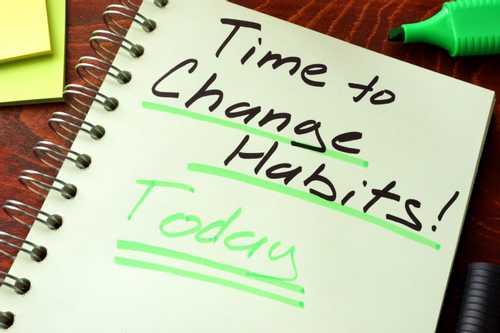Why behavior change is hard - and why you should keep trying - Harvard Health
Curated from: health.harvard.edu
Ideas, facts & insights covering these topics:
8 ideas
·14.2K reads
19
Explore the World's Best Ideas
Join today and uncover 100+ curated journeys from 50+ topics. Unlock access to our mobile app with extensive features.
Successful behavior change
One potential problem when changing behaviors is that we're too often motivated by negatives such as guilt, fear, or regret.
- Research found that long-lasting change in behavior is most likely when it's self-motivated and rooted in positive thinking.
- Studies have also shown that goals are easier to reach if they're specific.
- You should also limit the number of goals you're trying to reach to prevent overtaxing your attention and willpower.
1.12K
2.8K reads
Change is a process
... not an event. The transtheoretical model (TTM) presupposes that at any given time, a person is in one of five stages of change: precontemplation, contemplation, preparation, action, maintenance.
Each stage is a preparation for the next one, so you mustn't hurry through or skip stages.
958
2.09K reads
Precontemplation
At this stage, you have no conscious intention of making a change. People in this stage tend to avoid reading, talking, or thinking about unhealthy behavior. However, their awareness and interest may be sparked by outside influences.
854
1.76K reads
Contemplation
At this stage, you're aware that the behavior is a problem, but you still haven't committed to taking action.
To move on to the next stage, make a list of the pros and cons, then examine the disadvantages and consider how to overcome them: If one 30-minute exercise is too much, how about two 15-minute sessions?
898
1.49K reads
Preparation
At this stage, you know you must change, you believe you can, and are making plans to do so soon. You've also taken some initial steps.
- It is important to anticipate obstacles and plan ways around them.
- Create an action plan with realistic goals. Once you are able to meet them, you can work your way up to more ambitious goals.
895
1.53K reads
Action
At this stage, you've changed. You are able to face the challenges of life without the old behavior. For example, if stress tempts you to eat, you can use healthy coping strategies such as exercise.
Be clear about your motivation; write down your reasons for making the change and remind yourself daily. Get support.
893
1.47K reads
Maintenance
Once you've practiced the new behavior for six months, you're in the maintenance stage.
Shift your focus to integrate the change into your life and prevent relapse. It may require other changes, like avoiding situations or triggers associated with the old habit.
883
1.43K reads
Relapse and recycling are common
The path between stages is seldom straightforward. Most people relapse at some point and recycle through one or more stages, though you usually won't go back to square one.
Every time you relapse, you will learn something about yourself. Next time, you can use what you learned, make changes, and be wiser as you continue on the path.
887
1.64K reads
IDEAS CURATED BY
George 's ideas are part of this journey:
Learn more about personaldevelopment with this collection
How to overcome unwanted thoughts
How to manage intrusive thoughts
How to change your attitude towards intrusive thoughts
Related collections
Similar ideas
5 ideas
Why Is Change So Hard?
psychologytoday.com
9 ideas
The 6 Stages of Behavior Change
verywellmind.com
11 ideas
Read & Learn
20x Faster
without
deepstash
with
deepstash
with
deepstash
Personalized microlearning
—
100+ Learning Journeys
—
Access to 200,000+ ideas
—
Access to the mobile app
—
Unlimited idea saving
—
—
Unlimited history
—
—
Unlimited listening to ideas
—
—
Downloading & offline access
—
—
Supercharge your mind with one idea per day
Enter your email and spend 1 minute every day to learn something new.
I agree to receive email updates
